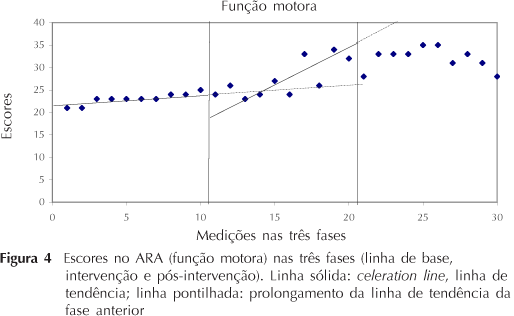Constraint-induced movement therapy (CIMT) consists of restraining movement of the non-affected arm while providing intensive training of the affected upper extremity. Positive results have been reported after CIMT in individuals with hemiparesis due to stroke. This study is a longitudinal, ABA-design documentation of the effects of CIMT on upper extremity function of an individual with chronic left hemiparesis. Baseline phases (A) lasted two weeks and intervention (B) involved restrain of the non-affected arm with a splint and five three-hour weekly sessions of training of the affected arm, for two weeks. During the six study weeks upper extremity function was assessed by means of the Action Research Arm (ARA) and movement quality and dexterity were assessed with the Wolf Motor Function Test (WMFT), five times a week. Quality and frequency of use of the upper extremity were assessed by the Motor Activity Log (MAL) once a week. Collected data were statistically analysed. Results showed significant gains in quality of movement (WMFT) during intervention (p<0.05), which were maintained during follow-up (p>0.05). As to dexterity (WMFT) and functioning (ARA), significant gain trends were detected during the first four weeks, performance having stabilised thereafter (p>0.05). MAL analysis did not detect any clinically relevant change. This study thus documented motor performance gains after CIMT in a patient with chronic hemiparesis.
Exercise therapy; Hemiplegia; Stroke; Upper extremity




